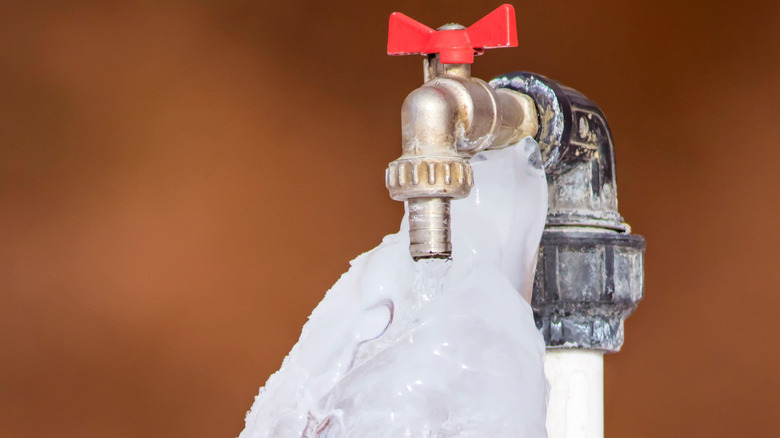How to Defend Plumbing System from Freezing: Key Tips
How to Defend Plumbing System from Freezing: Key Tips
Blog Article
Nearly everybody maintains his or her own conception with regards to How To Avoid Freezing Pipes.

Winter can wreak havoc on your pipes, especially by freezing pipelines. Right here's how to avoid it from happening and what to do if it does.
Intro
As temperatures decline, the threat of frozen pipelines boosts, potentially leading to pricey repair services and water damages. Understanding just how to avoid icy pipes is vital for property owners in cool climates.
Avoidance Tips
Insulating at risk pipelines
Cover pipes in insulation sleeves or use heat tape to safeguard them from freezing temperature levels. Concentrate on pipes in unheated or exterior areas of the home.
Heating methods
Maintain indoor areas adequately heated, especially areas with plumbing. Open up closet doors to permit cozy air to flow around pipelines under sinks.
Exactly how to determine frozen pipes
Look for decreased water circulation from faucets, uncommon smells or noises from pipes, and visible frost on revealed pipelines.
Long-Term Solutions
Structural adjustments
Take into consideration rerouting pipelines away from outside wall surfaces or unheated locations. Add added insulation to attic rooms, basements, and crawl spaces.
Updating insulation
Purchase top quality insulation for pipelines, attics, and wall surfaces. Appropriate insulation helps preserve consistent temperatures and lowers the risk of icy pipes.
Securing Outdoor Plumbing
Yard hose pipes and exterior faucets
Detach and drain pipes garden hose pipes prior to winter season. Set up frost-proof faucets or cover outdoor faucets with shielded caps.
Understanding Frozen Pipelines
What creates pipes to ice up?
Pipes freeze when exposed to temperatures listed below 32 ° F (0 ° C) for expanded durations. As water inside the pipelines ices up, it broadens, taxing the pipeline wall surfaces and possibly creating them to break.
Risks and problems
Icy pipelines can lead to water system interruptions, property damage, and costly repair work. Burst pipelines can flooding homes and trigger comprehensive structural damages.
Indicators of Frozen Water Lines
Determining frozen pipes early can stop them from rupturing.
What to Do If Your Pipes Freeze
Immediate activities to take
If you presume icy pipes, maintain taps open to relieve stress as the ice thaws. Utilize a hairdryer or towels soaked in warm water to thaw pipes gradually.
Final thought
Preventing frozen pipelines needs aggressive steps and quick feedbacks. By understanding the reasons, signs, and safety nets, homeowners can safeguard their pipes during cold weather.
5 Ways to Prevent Frozen Pipes
Drain Outdoor Faucets and Disconnect Hoses
First, close the shut-off valve that controls the flow of water in the pipe to your outdoor faucet. Then, head outside to disconnect and drain your hose and open the outdoor faucet to allow the water to completely drain out of the line. Turn off the faucet when done. Finally, head back to the shut-off valve and drain the remaining water inside the pipe into a bucket or container. Additionally, if you have a home irrigation system, you should consider hiring an expert to clear the system of water each year.
Insulate Pipes
One of the best and most cost-effective methods for preventing frozen water pipes is to wrap your pipes with insulation. This is especially important for areas in your home that aren’t exposed to heat, such as an attic. We suggest using foam sleeves, which can typically be found at your local hardware store.
Keep Heat Running at 65
Your pipes are located inside your walls, and the temperature there is much colder than the rest of the house. To prevent your pipes from freezing, The Insurance Information Institute suggests that you keep your home heated to at least 65 degrees, even when traveling. You may want to invest in smart devices that can keep an eye on the temperature in your home while you’re away.
Leave Water Dripping
Moving water — even a small trickle — can prevent ice from forming inside your pipes. When freezing temps are imminent, start a drip of water from all faucets that serve exposed pipes. Leaving a few faucets running will also help relieve pressure inside the pipes and help prevent a rupture if the water inside freezes.
Open Cupboard Doors
Warm your kitchen and bathroom pipes by opening cupboards and vanities. You should also leave your interior doors ajar to help warm air circulate evenly throughout your home.

I discovered that review about Prevent Frozen Pipes while doing a lookup on the internet. Do you know about another person who is enthusiastic about the subject? Please feel free to share it. I treasure your readership.
Order Repair Report this page